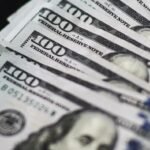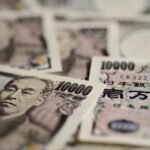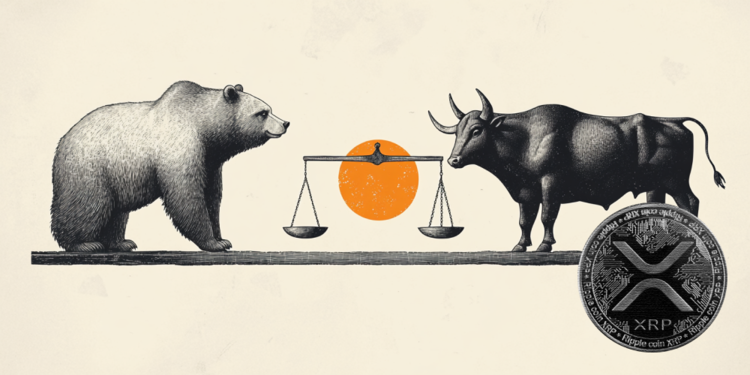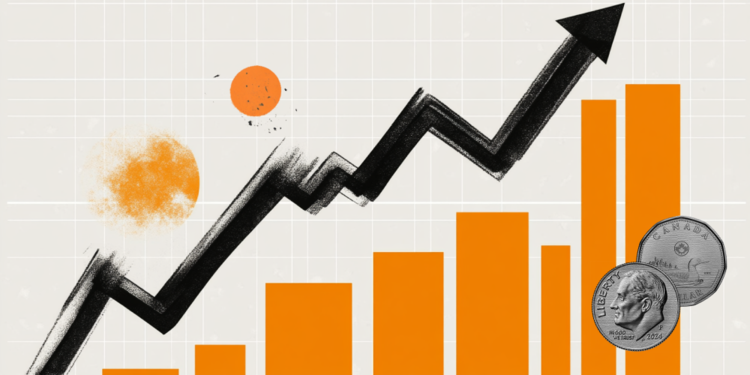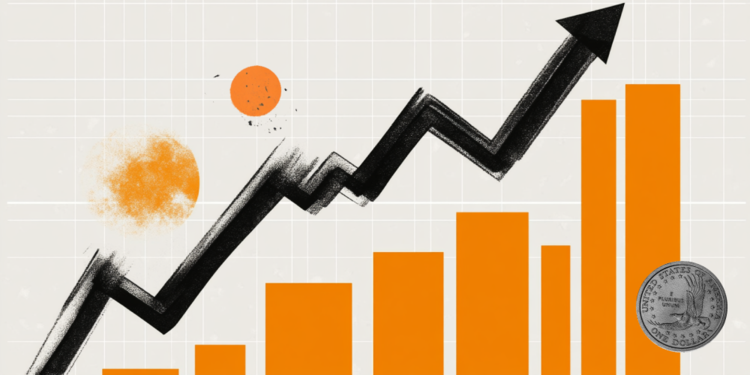- The US Dollar Index holds below 108.00 as mixed economic indicators raise concerns ahead of Friday’s employment report.
- ADP reports a stronger-than-expected increase in private sector employment for January, while Initial Jobless Claims also rise.
- Investors anticipate the upcoming Nonfarm Payrolls data to gauge the Federal Reserve’s future monetary policy decisions.
The US Dollar Index (DXY), which measures the value of the US Dollar (USD) against a basket of currencies, struggles to hold its recent gains, trading below 108.00 on Thursday. Mixed United States (US) economic data fuels uncertainty ahead of the January employment report due on Friday. Investors remain cautious as labor market signals provide conflicting outlooks, with ADP data showing strength while jobless claims rise.
Daily digest market movers: US Dollar index remains soft after mixed data
- ADP reports a stronger-than-expected private sector job increase of 183,000 in January, exceeding the 150,000 consensus.
- On Thursday, Initial jobless claims rise to 219,000, surpassing expectations of 213,000 and up from last week’s 208,000, signaling potential labor market softening.
- Continuing jobless claims increase to 1.886 million, above the forecast of 1.87 million and last week’s 1.858 million.
- Investors now focus on Friday’s Nonfarm Payrolls report, projected to show 170,000 new jobs in January, down from December’s 256,000.
- The CME FedWatch tool shows a nearly 90% probability of the Fed keeping rates steady in March, reinforcing expectations of a prolonged hold. NFP data will dictate the pace of the markets bets.
- Fed’s Austan Gooble was on the wires during Thursday’s session but didn’t provide any relevant insights but noted that the pace of the cuts will be slower. In the meantime, the Fed’s sentiment index remains in hawkish territory above 100 but downwards sloping.
DXY technical outlook: Indicators show growing bearish momentum
The US Dollar Index struggles to maintain recent gains, slipping below the 20-day Simple Moving Average (SMA) at 108.50. The Relative Strength Index (RSI) remains below 50, signaling increasing bearish traction. The DXY now looks poised to test the psychological support level at 107.00, with downside risks growing as mixed economic data clouds the Fed’s hawkish policy outlook.
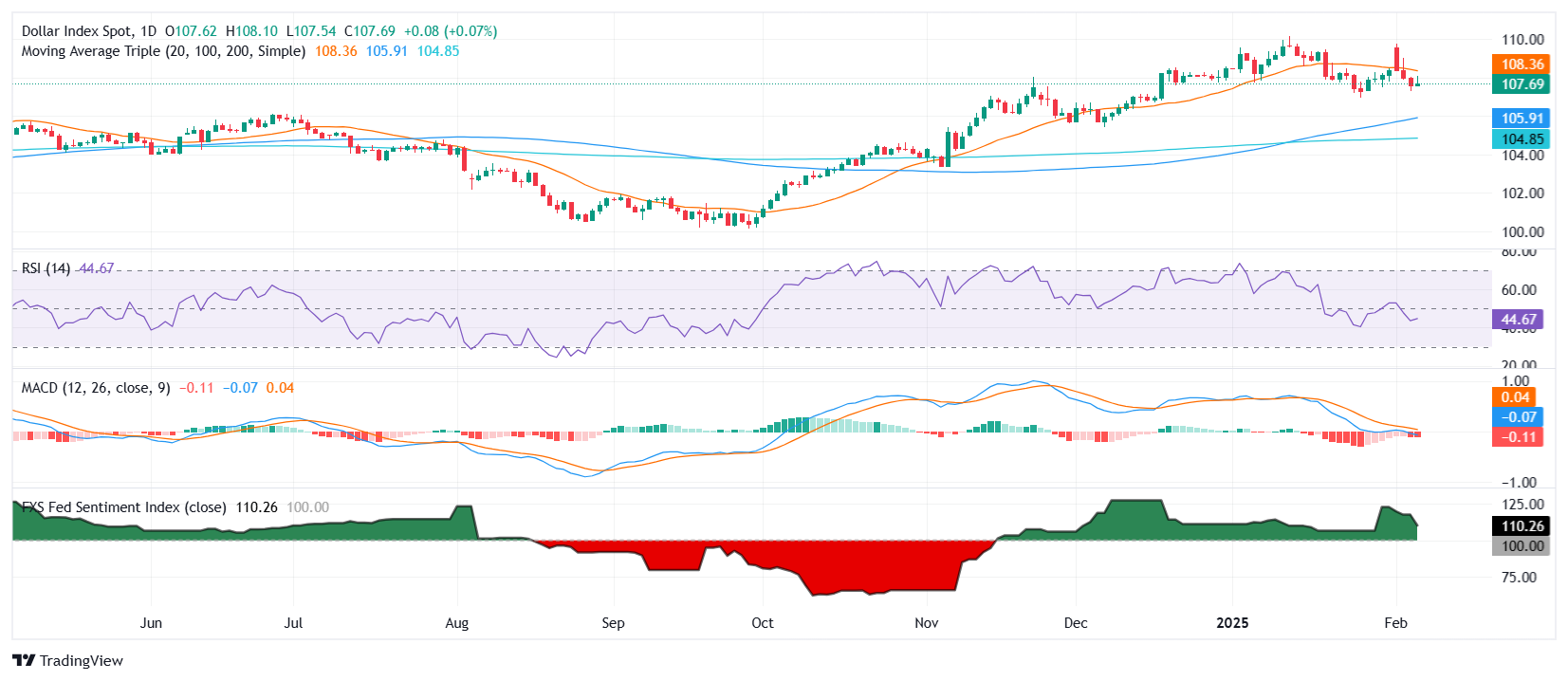
Fed FAQs
Monetary policy in the US is shaped by the Federal Reserve (Fed). The Fed has two mandates: to achieve price stability and foster full employment. Its primary tool to achieve these goals is by adjusting interest rates. When prices are rising too quickly and inflation is above the Fed’s 2% target, it raises interest rates, increasing borrowing costs throughout the economy. This results in a stronger US Dollar (USD) as it makes the US a more attractive place for international investors to park their money. When inflation falls below 2% or the Unemployment Rate is too high, the Fed may lower interest rates to encourage borrowing, which weighs on the Greenback.
The Federal Reserve (Fed) holds eight policy meetings a year, where the Federal Open Market Committee (FOMC) assesses economic conditions and makes monetary policy decisions. The FOMC is attended by twelve Fed officials – the seven members of the Board of Governors, the president of the Federal Reserve Bank of New York, and four of the remaining eleven regional Reserve Bank presidents, who serve one-year terms on a rotating basis.
In extreme situations, the Federal Reserve may resort to a policy named Quantitative Easing (QE). QE is the process by which the Fed substantially increases the flow of credit in a stuck financial system. It is a non-standard policy measure used during crises or when inflation is extremely low. It was the Fed’s weapon of choice during the Great Financial Crisis in 2008. It involves the Fed printing more Dollars and using them to buy high grade bonds from financial institutions. QE usually weakens the US Dollar.
Quantitative tightening (QT) is the reverse process of QE, whereby the Federal Reserve stops buying bonds from financial institutions and does not reinvest the principal from the bonds it holds maturing, to purchase new bonds. It is usually positive for the value of the US Dollar.
